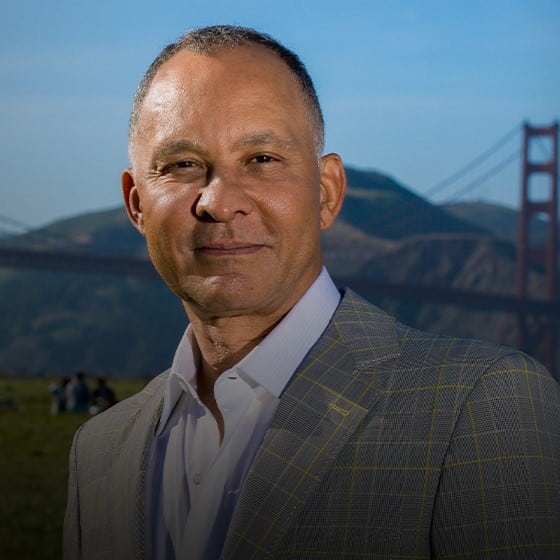Gynecomastia Pinch Test a Self Diagnosis

Medical Author: Miguel Delgado, M.D.
In addition to being known as “man boobs” or “moobs,” gynecomastia results in the development of male breast tissue that resemble those of women. There are, however, some cases of gynecomastia that are not caused by breast disorders. Man boobs can sometimes be caused by overweight individuals. It is possible to determine whether the gynecomastia is true gynecomastia or pseudo gynecomastia by performing the gynecomastia pinch test. In order to reduce enlarged male breasts, it is important to get the correct diagnosis.
Gynecomastia: What Is It?
Generally, gynecomastia occurs when breast tissue grows larger because of hormonal imbalances. A decrease in testosterone levels and an increase in estrogen levels can result in this imbalance. In addition to hormonal imbalance, there are several factors that can cause it:
- A number of medical conditions
- Prescription drugs
- A person’s age
- The genetic component
- A significant reduction in body weight
- Use of drugs
- Abuse of anabolic steroids.
Males who are affected by gynecomastia may experience one-sided breast growth or it may affect both sides. A gynecomastia pinch test will not always identify the specific cause of man boobs but can determine whether it is fat or breast glands.
Diagnosing Gynecomastia with the Gynecomastia Pinch Test
It is recommended that you consult a gynecomastia specialist, such as Dr. Delgado if you are experiencing male breast enlargement. A comprehensive physical examination and a review of your medical history will be required for the diagnosis of gynecomastia. During the consultation, the doctor will determine whether gynecomastia symptoms are caused by hormonal factors or if they are caused by drug-induced gynecomastia symptoms. Drugs such as anabolic steroids and prescription drugs are commonly used.
To determine whether the condition is true gynecomastia or pseudogynecomastia, a physical examination and gynecomastia pinch test is conducted. The procedure will require you to lie on your back. Using his forefinger and thumb, the doctor will examine the breast tissue. True gynecomastia is characterized by a rubbery or firm mass of disk-shaped tissue under the nipple. When no such tissue is present except for spongy soft fat tissue, the gynecomastia pinch test can determine whether the diagnosis is pseudogynecomastia.
A number of additional tests may be performed to assist with the diagnosis of gynecomastia and determine the cause if there is one:
- The purpose of a mammogram is to obtain a radiologic image of the breast tissue
- Measurement of hormone levels by endocrine hormone tests.
- Evaluation of kidney, liver, and thyroid function by blood tests.
Symptoms and Diagnosis of Gynecomastia
The American Society of Plastic Surgeons categorizes gynecomastia into four grades based on the severity in adolescents and adults.
Gynecomastia is characterized by the following symptoms:
- Breast pain or swelling
- Tenderness of the breast tissue
- Under the nipple, movable tissue can be observed
- Nipple discharge that is bloody
- Fluid is secreted in a manner similar to breast milk
- Underarms and nipples are itchy
- Having a sudden feeling of unwellness
- Sex drive changes and mood swings.
The gynecomastia pinch test can determine pseudogynecomastia or excess fat build up.
Gynecomastia: Four Grades
Grade 1 – The breast tissue enlargement is minor and not very noticeable. Slight swelling is present, but excess skin is not present.
Grade 2 – Moderate breast enlargement that is unnoticeable when clothing is worn loosely. Excess skin is not present.
Grade 3 – There is a moderate to severe degree of breast enlargement that is noticeable. As the swelling increases, excess skin may develop, resulting in a crease in the breast.
Grade 4. There is a significant and severe enlargement of the breast tissue. A significant amount of excess skin gives the breasts a feminine appearance, with a noticeable sag and crease.
What is the treatment for gynecomastia?
Gynecomastia surgery is the only recognized permanent solution and the best treatment for gynecomastia. The breast tissue will not return after male breast reduction surgery. A male breast reduction surgery can be performed in a variety of ways, depending on the severity of the condition:
- The standard treatment for gynecomastia consists of the excision of the breast tissue along with liposuction that remove excess fat. It is widely recognized that this technique is the most effective method for the reduction of male breast enlargement. It is performed by making an incision around the lower edge of the areola known as a Webster incision. The breast glandular tissue is surgically excised and the fat is removed by liposuction. As a result, the chest will appear masculine and sculpted.
- The two stages technique is used in the treatment of patients with moderate skin laxity or grade 3 gynecomastia. The first stage is described above, and the second stage is the periareolar lift, which is typically done four to six months after the first procedure. This allows the blood supply to re-establish on the nipple-areola, reducing the risk of complications. In this stage, skin reduction is performed by making an incision around the edge of the areola. This is followed by a second larger incision, which makes the tissue between the incisions doughnut-shaped. The excess skin and tissue are removed, and the incisions are sutured closed.
- For all grade 4 and some grade 3 gynecomastia symptoms, a double incision mastectomy is recommended. Nipples and areola complexes are removed as a skin graft. Depending on the amount of redundant tissue and excess skin, the next stage involves making an incision from the breast fold to the armpit.The back of the table is raised to put the patient into a sitting position to see the effects of gravity on the excess skin. The result is a tight and contoured chest that can be created by removing the precise amount of skin. The new nipple-areola complex position is calculated and attached, as a skin graft to ensure a well-balanced and aesthetically correct position.
How to Choose a Plastic Surgeon
Gynecomastia surgery is performed by a variety of surgeons. If you are considering gynecomastia surgery, make sure your surgeon has board certification in plastic surgery, like Dr. Delgado, who specializes in gynecomastia.
Complete Dr. Delgado’s inquiry form to learn more about gynecomastia plastic surgery procedures.
A member of the American Society of Plastic Surgery and Aesthetic Society, Miguel Delgado, M.D., F.A.C.S, is a highly regarded San Francisco Board-Certified Plastic Surgeon. Dedicated solely to cosmetic surgery, Dr. Delgado has a surgical practice exclusively in this field. In addition to specializing in gynecomastia surgery, he also manages Gynecomastia.org, the largest and oldest gynecomastia forum dedicated to supporting, educating, and providing solutions to men suffering from breast enlargement. Practicing medicine in San Francisco for 30 years, Dr. Delgado celebrates his 30th year in practice. He was voted the Best Plastic Surgeon in San Francisco Magazine and Castle Connely’s “Top Surgeons” from 2018 to 2022.
Frequently Asked Questions
1. How do you do a pinch test for gynecomastia?
A gynecomastia pinch test is performed by pinching the deep tissue under the nipple in the male breasts. Gynecomastia breast tissue feels like firm tissue but the excess fat is soft and spongy. However, a more accurate gynecomastia diagnosis is performed by a board-certified plastic surgeon to evaluate the breast size and its contents.
2. How do I know if it’s gyno or fat?
The gynecomastia pinch test is a gynecomastia physical exam to diagnose gynecomastia from excess fat or psudogynecomastia.
3. How does gynecomastia feel?
Enlarged breast tissue feels firm to very firm. It can also feel like thick fibrous network of tissue. This thick fibrous tissue is still considered gynecomastia tissue and be must surgically removed since liposuction will not work.
4.Does gynecomastia hurt when you touch it?
Men who experience gynecomastia can have breast pain and discomfort. This true for ment who have glandular gynecomasia and not pseudogynecomastia. Gynecomastia or manboobs caused by fat build up is not painful.
